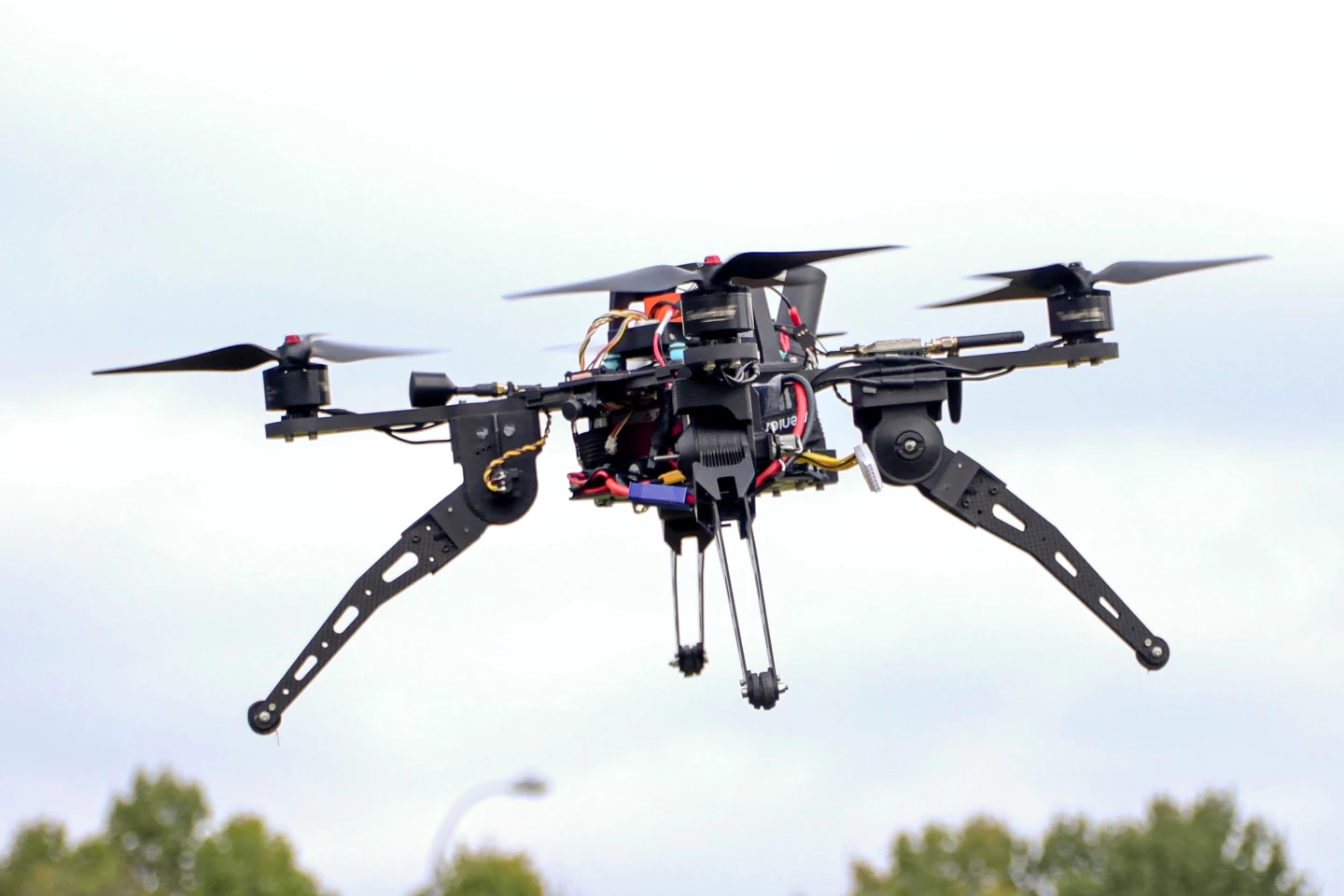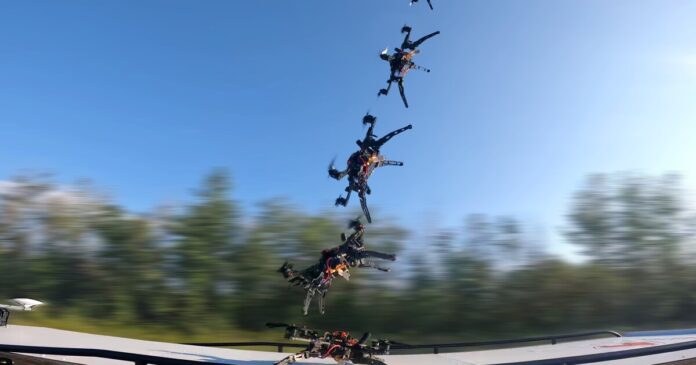Drones are already very useful, but they could be even more so if they could land on vehicles without requiring those vehicles to slow down for them. A new system makes that possible, allowing for on-truck landings at speeds of up to 110 km/h (68 mph).
First of all, what would be the point in having a drone land on a vehicle?
Well, for one thing, the aircraft could go out and perform military reconnaissance, then report back to its transport-based troop. It could also deliver supplies to mobile teams on the road, or even save battery power by hitching rides on buses or trucks that are heading in the same direction that it is.
The convenience factor would start to dwindle, however, if drivers had to stop and wait while the drone located their vehicle, then came in to execute a fastidious landing. Unfortunately, though, landing on a vehicle while it’s traveling at speed hasn’t traditionally been much of an option.
For one thing, the drone has to pitch so far forward due to the high wind drag, there’s a real risk of it striking its propellers on the roof of the vehicle. Additionally, when its rigid landing gear hits the rigid roof at highway speeds, the gear is quite likely to break – another possibility is that the drone will bounce off the roof and flip over.
With these problems in mind, a team from the Createk Research Lab at Canada’s University of Sherbrooke created the DART (Direct Approach Rapid Touchdown) drone.
University of Sherbrooke
The 2.4-kg (5.3-lb) quadcopter is equipped with friction-based shock absorbers in its landing gear, which dissipate kinetic energy without creating a rebound effect. There’s more to the copter than just its shocks, however.
The DART begins its landing by tracking the vehicle as it flies up above, then it executes a fast vertical descent. A high-speed descent not only allows the drone to keep up with the vehicle, it’s actually safer, as it makes the aircraft less susceptible to disturbances like wind gusts, and thus more likely to stick to its planned trajectory.
Because the DART is pitched far forward to compensate for the considerable wind drag, it automatically performs a pitch-leveling maneuver right before landing. This keeps its propellers from striking the roof, plus it allows all four of its legs to absorb the impact energy.
The drone additionally switches over to reverse thrust mode right as it lands. This helps keep it from sliding, by pressing its feet down against the vehicle’s roof.

University of Sherbrooke
In closed-course road tests, the DART made 38 attempts at landing on a horizontal platform mounted on the back of a pickup truck traveling at 110 km/h, and was successful every time. You can see it in action, in the video below.
“Our approach, which combines a fast dive toward the vehicle, lightweight friction shock absorbers to dampen impact and rapid thrust reversal at contact, drastically expands the landing envelope, making it far more robust to wind gusts, sensor errors and unpredictable vehicle motion,” says Mechanical Engineering PhD student Isaac Tunney, who led the study along with John Bass and Alexis Lussier Desbiens. “This innovation is a key step toward enabling new applications for UAVs.”
A paper on the research was recently published in the Journal of Field Robotics.
Autonomous Drone Landing on HIGH-SPEED Truck
Source: Journal of Field Robotics


